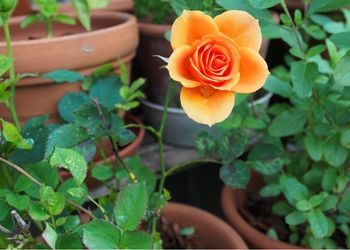If you have a selection of pots to choose from, then you might be wondering what the best pots for roses are to work best with your prize rose plant.
In this article, I’m walking through the best pots for roses, plus the ones I tend to use and why you might want a variety.
Here’s a short answer to start us off.
Generally, clay, ceramic, and terracotta pots are considered best for roses. Their highly porous nature and strong weather-resistant properties are two key factors that make them a win among other pot types. However with proper care, and depending on the location, plastic and metal pots work well too.
As with any type of pot, they all have their own pros and cons.
Best pots for roses…
Below I’ve added a clear breakdown of the three types of pots that are generally considered safe for rose planting, and what conditions make a specific type ideal.
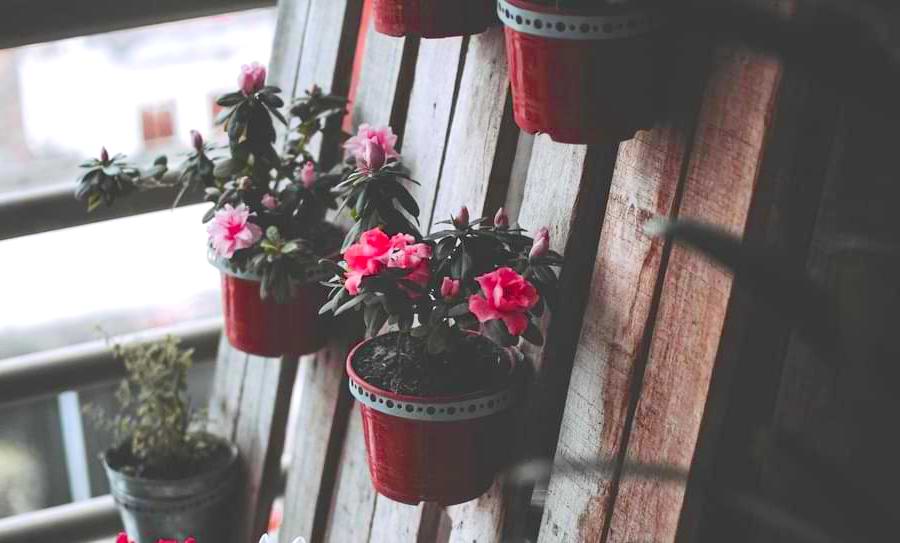
I’ve also included some related hints and tips to consider when choosing a pot for your roses.
1. Clay, ceramic, and terracotta pots
Pots made out of clay, ceramic, and terracotta share several similar properties and are without a doubt considered the best for growing roses.
They all share strong temperature-resistant characteristics that help them insulate the plant from extreme temperatures.
Aside from protecting the plant and roots from drying out due to excessive heat in summer, they can also provide sufficient protection for roots in the winter season.
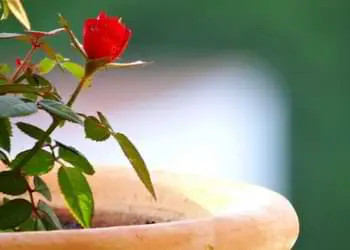
Their porous nature can help to drain excess water and help avoid the roots from sitting in a pool and rotting and suffocating from too much moisture.
Clay pots are created by chemical weathering and geothermal alteration of igneous rocks into hydrous aluminum phyllosilicates.
“Ceramic” usually refers to the finished product of clay after being fired to a high temperature and Terracotta is a low-firing clay that is normally found in reddish or brown colors.
I think these are ideal for my miniature roses which I tend to manage more as I switch them between indoor and outdoor use. You can find out more about how to manage miniature roses here.
These are arguably the best pots for roses, especially larger roses. It’s made harder mostly due to weight.
Pros
- Durability over time
- Made of natural material
- Variety of styles, colors, sizes, and designs
- Heavy and stable, and will not tip over easily
- Will match indoor and outdoor settings
- Withstands intense temperature weather
Cons
- Higher cost than plastic or metal pots
- Heavier in weight, so more difficult to move around
- Must be kept on strong flooring
- Breaks easily when knocked or when it falls
- Low temperatures can cause cracks
- Difficult to add extra drainage holes
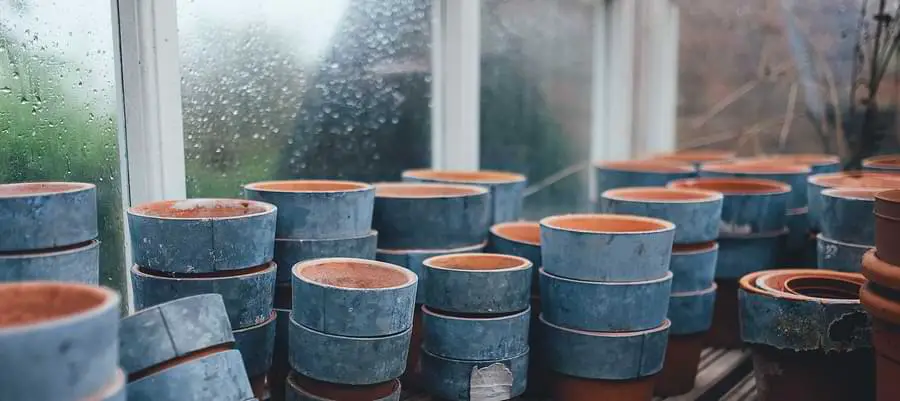
2. Plastic pot
Generally one of the least expensive types of pots for roses.
Relatively easy to source and despite being prone to cracking, they hold water relatively well. Particularly good if you have a lot of them to plant as it keeps the cost down.
So all in all they make it a good all-round option for gardeners – and therefore rose growers too!
Lightweight, and flexible, making it easy to work around, relocate, and maintain.
And because these days they can be customized in a variety of colors, it’s possible to coordinate plastic pots with the color of your roses, and your home’s interior and exterior decor …depending on whether you’re growing the roses indoors or outdoors.
But also remember that generally speaking, plastic pots for plants come in black color, which makes them a good solar absorber.
You can get them in white, but white does tend to become dirty looking. Of course, there are pink, green, and other colors too.
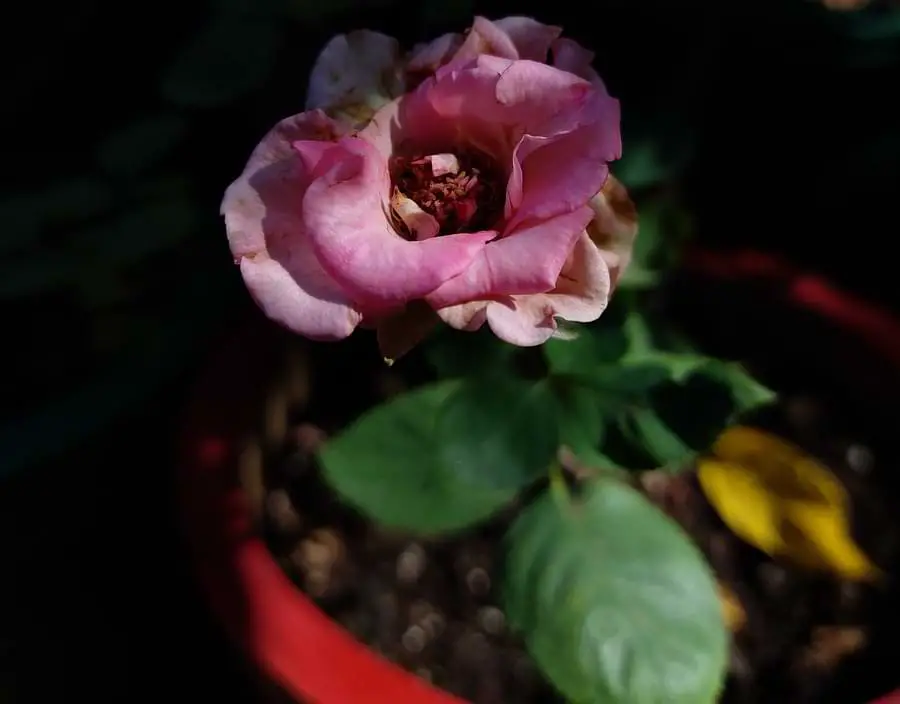
Increased heat absorption
But, for roses, increased heat absorption can damage the plant and dry out the roots too much.
This is why many plastic pots, especially dark-colored ones that are intended for outdoor use are treated with ultraviolet light inhibitors to reduce heat absorption. Or, often other colors are available.
Plastic pots are not porous (which is what makes them good water retainers), so water could stagnate at the bottom.
If proper drainage is not provided, then the roots can begin to rot which can damage the plant. And the problem is you may not know until it’s too late.
Try to add 4-6, and 2-3 holes in the base of large pots, and some in small pots for proper drainage.
Making holes in plastic pots is easy, just be careful not to crack them …of course.
Plastic pots are generally considered safe for plants. Most plastic pots are also made using recyclable materials so disposable is environmentally-friendly, when the pot is no longer usable.
But, plastic pots have thinner walls which makes them weaker at insulation from temperature changes.
So they are best considered in locations that don’t have drastic or intense temperature fluctuations.
They are fine though, you just have to keep an eye on them to look out for cracks.
Pros
- Less expensive
- Easy to find
- Comes in many different colors
- More durable in the right conditions
- Lighter than other materials
- Retains moisture
- Easy to add drainage holes
Cons
- Non-porous
- Less protection from weather changes (poor insulation)
- More frequent replacement is needed due to damage
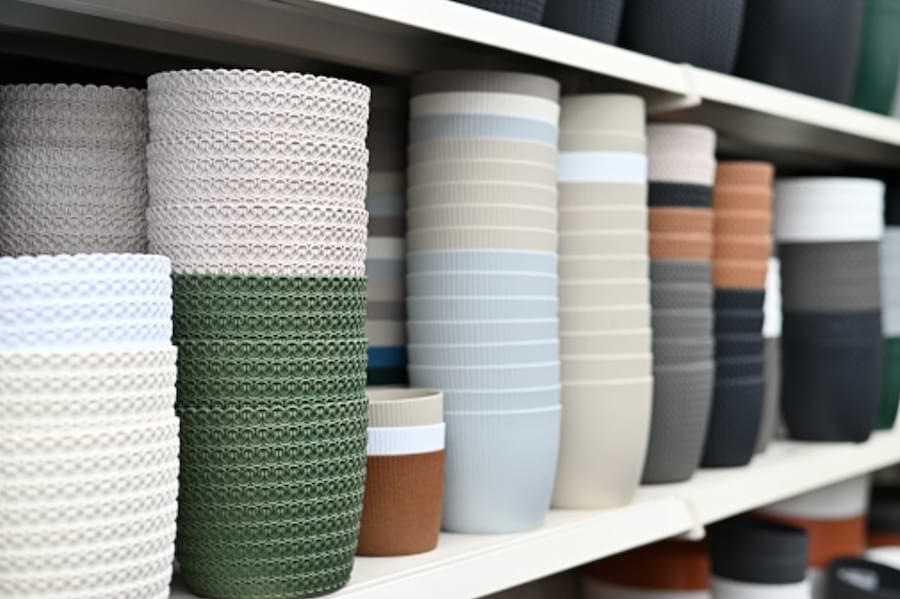
3. Metal pots
If you’re looking for the best pot for your roses to keep up with your aesthetic expectations, then metal pots make the ideal choice.
They’re not too pricey, but neither are they the cheapest.
They come in a variety of styles, and colors, and can even be customized to suit your interior or exterior themes. Their strong shape and form make them extremely durable, and long-lasting.
Their sleek appearance makes them easy to clean and maintain, and are also flexible when it comes to making holes for drainage.
However, they are best recommended for places that are less prone to high temperatures and intense heat, Metal pots are definitely prone to overheating.
Of course, roses like a lot of sunshine, and heat dries out the soil quicker which isn‘t great for roses.
So be sure to water your roses thoroughly as the weather dictates.
This may mean being more frequent with your watering routine in summer especially to avoid the plant from damaging its roots due to overheating.
Metal pots, just like plastic ones, are not porous and can retain water well, so with a proper watering routine, you should be able to balance out the overheating properties of metal pots.
However, make sure you have proper drainage holes to avoid water from pooling in the pot and create more if required.
Pros
- Designed for long life and durability
- Easy maintenance
- Comes in a variety of colors, styles, and shapes
- Looks expensive and design-friendly.
Cons
- Overheating can dry out the plant roots
- Fertilizer salt damages some metal finishes
- Can get very hot in intense climates
Many rose experts stress that gardeners take into account the location and temperature when choosing a pot type for roses.
It’s also highly recommended to take pots that have drainage holes already as doing it by yourself can potentially damage the pot.
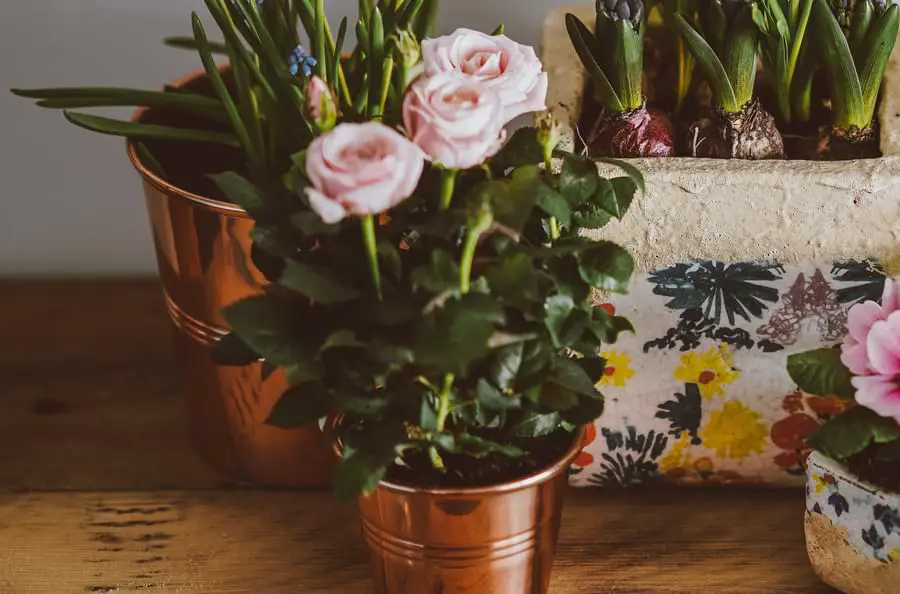
Best pots for roses ~ More roses help 🌹
I hope this has helped you in deciding the best pots for roses for your rose bed. Be sure to check out my other articles and also check my recommended tools and resources page.

Hi, I’m Michael. My passion for roses was sparked a few years ago after visiting a dedicated community rose garden. So Rosehow.com represents my take, my learnings, and my help for anyone looking to grow, be proud of, and harvest roses.

